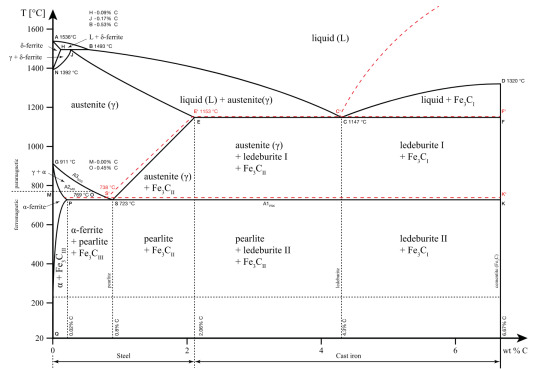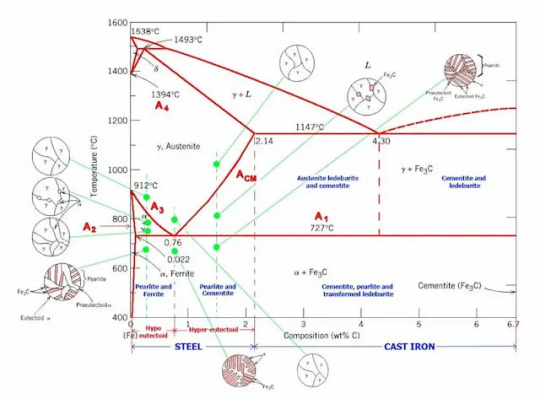#really the difference between the types of iron and steel is how they're made
Explore tagged Tumblr posts
Text
Cars Headcanon: Vehicle Growth and Development
*note: this Headcanon is for civilian-class vehicles, only. The process is slightly different for carrier and combat class vehicles...as is the siring process.*
Following the events of the Factory Wars (1819-1864, Cycle 9), most newborn, sapient vehicles are manufactured in factories. The long and the short of things is that vehicles actually do "grow up," after they are manufactured, and have distinct phases of development between infancy and adulthood.
*I used Doc as an example...because it gave me an excuse to draw him as an adorable babeh.*

A vehicle wanting to procreate must go through the siring process with a partner of the opposite gender (see my post on reproduction). Recently, some factories (Chrysler, Jeep, Chevrolet, Stellantis, and Mazda) have allowed people to petition them directly if they are unable to create a flame due to injury, manufacturing defect and/or sexual orientation.
Once a flame is sired, the female carrier will begin receiving internal notifications with instructions on what factory they'll need to report to. If she can't get to the factory right away, she can maintain the flame for three weeks by doubling her food intake. After this time, the energy is reabsorbed, and she'll have to go through the siring process if she wants to try again.
No one outside of a factory knows how a newborn is actually manufactured. In conversations with an angel at the Hudson Motor Car Factory, Doc's mother and grandfather learn that there are at least two processes involved beyond the initial "harvesting" (the operation that extracts the flame from the female's body): "grafting" and "nurturing." The time between harvesting and being introduced to the family is, on average, three and a half days…though it can take as long as seven if the flame splits, resulting in twins.
A newborn is always the same make as their factory of origin, and the type of vehicle created is dependent on the vehicles involved in the siring process. If both parents are one type of vehicle (a car, for example), the child will be that type of vehicle. If the parents are two, different types of vehicle (a car and a plane, for example), the resulting child has a 50% chance of being one or the other. Gender is random. Twins are always the same gender and model.
When newly manufactured, a vehicle begins life with a simple, two-cycle engine and are capable of self-locomotion. The moment a child emerges from the factory, they memorize their parents UV patterns, and the sound of their parent's voices on the way home initiates their natal learning software. By the end of their first day, the newborn can speak in complete sentences and will spend every waking moment asking questions and generally absorbing as much information as their budding minds can handle. This period of hyper information gathering, known as the Infant Period, lasts until the child's third birthday…and the dreaded First Appetency Phase.
In preparation for their most intense growth spurt, the child develops an insatiable appetite for metal, especially objects made of iron, copper and lead. And…much to the horror of those around them, they're not picky about where the metal comes from. Non-sapient machines, road markers, pipes, unattended parts, steel bridge supports, power poles, tools, cooking utensils…really anything that the child can stuff into their crop whole or tear apart with their incredibly strong teeth is fair game. It's not uncommon for children, during the height of the phase, to attempt to eat their parents and/or siblings. They do not attend school during this phase for obvious safety reasons.
The excess metals are stored within the child's body, melding with existing metals in the frame, engine, and mechanical components. The infant eventually becomes so dense and heavy that they can't move; eleven hours later the spurt begins. The child's body metals "slacken," taking on a texture similar to the metals around and inside the mouth. Stored metals from the Appetency Phase are re-mobilized, and the child's body begins to slowly grow. It's a painful period fraught with danger, and many parents don't leave their children unattended for even a minute.
Manufacturing defects (misshapen wheels, bent frames, UV blindness, etc) manifest during this growth spurt. Many can be corrected, especially with modern technology…but some cannot.
After two weeks, the growth spurt runs its course and the infant vehicle matures into an adolescent. They are now about half the size of an adult with a four cycle engine. Adolescents are much more mobile than infants, and this is the age when they really began to interact with the world around them. They are still insanely curious and learning rapidly, and this is when most parents start teaching them a trade…or at the very least the life skills that they'll need to survive on their own.
Almost immediately after their seventh birthday, the adolescent enters their Second Appetency Phase…though by this point, they tend to have enough self-control that they're not eating their family out of literal house and home. This time around, they crave rarer metals, like titanium, palladium, and magnesium, and they're taking in almost triple the amount of food as an adult. The slackening phase of this spurt is more dangerous than the first due to the fact that the child's engine is powerful enough to allow mobility, despite the increase in weight. Most families opt to keep their children confined to the house until the spurt runs its course, as even a minor fender-bender during this time can be lethal.
After two weeks, the adolescent matures into a young-adult. They are now about 75% the size of an adult, with a significantly more powerful engine and a greater capacity for strategic problem-solving, deductive reasoning, and information processing. They are strong enough to work and participate in competitive sports, though there is mounting evidence that overtaxing the body and engine too much during this phase can cause developmental issues during their 11th year growth spurt.
Upon reaching their eleventh birthday, a vehicle experiences their Third, and final, Appetency Phase. While they still need extra metal in their diet (copper and aluminum, especially) they find themselves craving organic materials like peat, kerogen, coal and, oddly enough, crab meat. The final growth spurt takes three weeks…but once a vehicle's body metals harden, they are considered an adult, socially and legally. They can drink, get married, live independent of their parents, own property, run for public office, and work full-time somewhere other than a family-owned business.
Probably the most important physical change is the development of reproductive hardware. The ability to hook up with another vehicle for pleasure usually drives the first two or three years of adulthood as a vehicle figures out, not only out how their own hardware works, but what preferences they have in terms of sexuality, foreplay, and hook up configurations. Because there's an extra step involved in actually siring a child, accidental children aren't really a thing, and most vehicles (in the modern era) don't even think about parenthood until their late twenties/early thirties.
Now, that's not to say there aren't risks involved with casual hookups. Vehicles are immune to most of the organic viruses left over from the Great Dying and The Return, but they can be susceptible to digital viruses…and the easiest way for a virus to transfer between vehicles is during physical intimacy. Outbreaks can occur suddenly and spread rapidly, devastating populations…and even disrupting the factories, themselves. Cycle 8, for example, was rocked by a powerful, almost sapient, computer virus…and the resultant hardware crashes wiped out 60% of all bio-mechanical life on the planet, necessitating a full recall.
In 1900 (Cycle 9), the global, average life expectancy of a vehicle was 32 years. By 2017 this had more than doubled to 65 years. Advances in bio-mechanics, public health, automation, safety standards, and a more robust biosphere have led to decreases in mortality, for all age groups, in much of the world. Part obsolescence, usually caused by political infighting between factories, is the major limiting factor to longevity, though the advent of 3D printing is helping to counteract it.
#cars fandom#pixar cars#cars#cars pixar#doc hudson#cars 2006#disney cars#disney pixar cars#cars headcanons#fabulous hudson hornet#hudson hornet#cars fanart#Cars reproduction#woc#world of cars
45 notes
·
View notes
Text

The iron carbon phase diagram is very normal and totally clears this up.

It... kinda makes sense but the irony is not lost on me that really Cast Iron is Steel with Carbon added.
So we have pure iron, and we add carbon and we call it steel. Ok cool, so then we also have cast iron, which is where you take iron and add more carbon. Yeah okay. And then we get pig iron, which is where you take iron and add even more carbon to it. So with steels we get high carbon steel and low carbon steel. Low carbon steel has more carbon than iron but less than iron. High carbon steel has less carbon than iron but much more than iron.
#steel#I vaguely remember some of this from Material Science but only did the one module on that in first year#smth smth different allotopes of iron and carbon have different properties and the way the crystals form#which is more important for stuff like annealing#really the difference between the types of iron and steel is how they're made#cast iron you get out of a bloomery casting#wrought iron you get by working the bloom of a bloomery#pig iron you get from a blast furnace#the manufacturing methods introduce all sorts of differences in their structures and the nature of the impurities#steel you get from a steel converter fed from scrap and pig iron#there's also Direct Reduced Iron which is most like cast iron? but is iron ore that's been directly reduced making it spongey#as you get holes where the impurities and oxygen was
8K notes
·
View notes